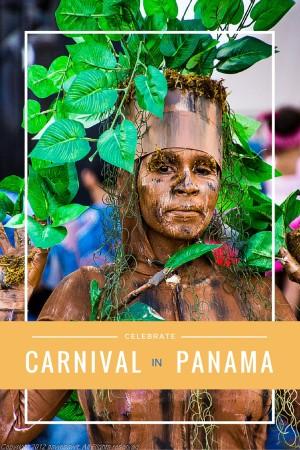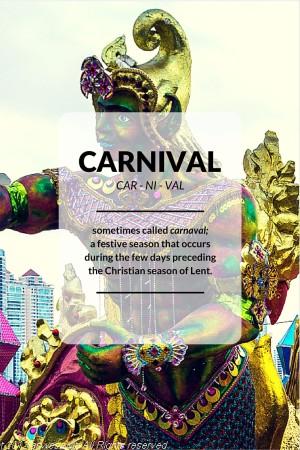If you’re mourning the end of the holidays, wishing for another excuse to celebrate, don’t despair! Carnival season is just around the corner.
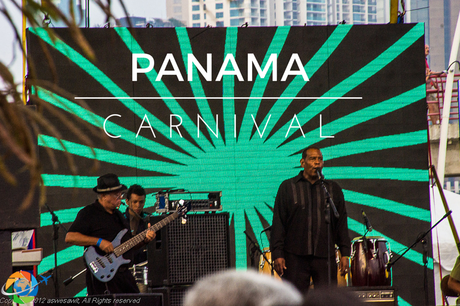
Celebrated all over the Americas and in some countries in Europe, Carnival (or Carnaval, if you prefer) is probably the most widespread party in the entire world. No matter where you celebrate it, it is four days of non-stop dancing, eating, drinking, and getting lost in a whirlwind of chaos that will inevitably blur into a surreal, dreamlike memory.
Before you pack your bags and buy a ticket to Rio de Janeiro, though, turn your eyes up north and pay attention to Panama. Though it is not as widely known as the carnival in Rio, Panama’s celebration is actually the second-largest in the entire world. Considering the size of the country (3 million people), it is safe to say that this is quite an impressive feat. Add to that the obvious allure of cheaper prices and fewer tourists, and celebrating the holiday in Panama will sound as sweet as honey.
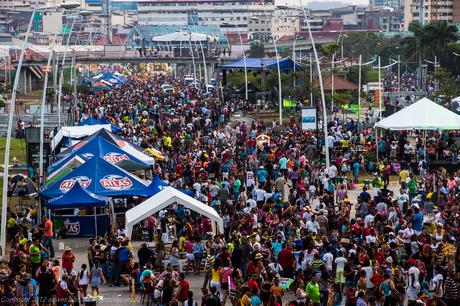
Many countries celebrate Carnival, but none do it quite like the Panamanians. With explosively colorful costumes, beautiful scenery, friendly locals, delicious food, and unique traditions, this is definitely the party you don’t want to miss.
Tip: Although Panama City may seem the obvious choice of where to be, practically every town in Panama celebrates Carnival. Las Tablas, Penonome, and Los Santos are all well known destinations for the holiday.
History
Carnival first began during colonial times, when Panamanians dressed up as the King and Queen of Spain. Both celebrating and mocking the culture that had been created from the country’s conquest, many wore costumes of conquistadors, slaves, and natives. During the celebration, the people would parade the King and the Queen, simulate battles between groups, and dance to their hearts’ content.
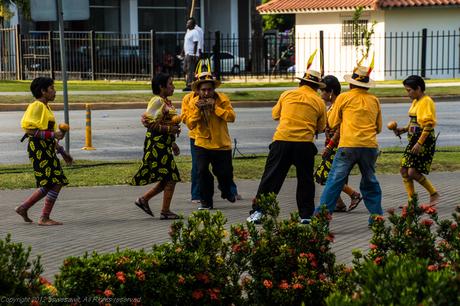
It wasn’t until 1910 that the Carnival became an official holiday. By then, some things had changed: The King disappeared – no one knows where to – and the Queen was left to reign over party enthusiasts. New characters like demons, bulls, and feathered beauties rose up to replace the colonial characters of the past. Carnival, like the country, had moved forward.

Panama Carnival today
Today, two of the most popular traditions are the feud and the mojaderas. The feud is a remnant from colonial days that has morphed into a battle of opulence and extravagance between two historically rivaling neighborhoods: Calle Arriba and Calle Abajo. Celebrated in the tiny town of Las Tablas, this feud may very well be the biggest draw in all of Panama’s Carnival celebrations: People from all over the world come to watch the neighborhoods vie for the prize of having the most beautiful queen and the most creative parade float.
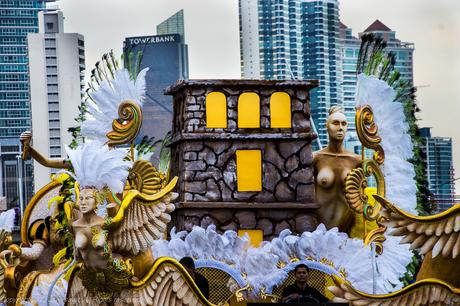
The mojaderas are just as enjoyable but more based on need than history. Throughout the parades giant water trucks called culecos come around and spray people with hoses. Wherever the culecos can’t fit, you’ll find people spraying each other with water guns and dumping buckets of water on passersby. It might sound annoying, but when you’re in a hot tropical climate and surrounded by thousands of people in tight spaces, you’ll be very glad those mojaderas exist.
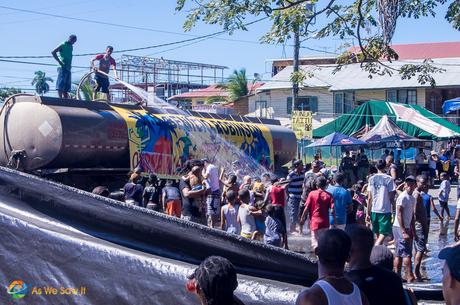
Mojaderas douse a crowd of Carnival revelers in Bocas del Toro
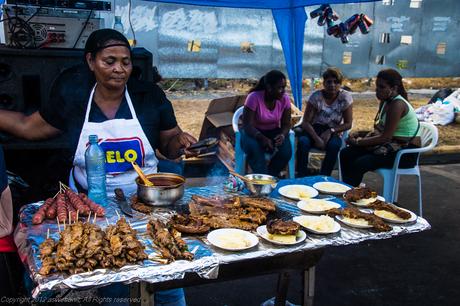
Food and drinks are readily available everywhere
Panama Carnival schedule
Carnival is celebrated on the four days before Lent, worldwide (find the dates here). Though there are some variations in the celebrations around Panama, this is the general schedule followed during these four days of partying:
Friday: On the first night of Carnival the Queen is selected among aspiring candidates. The party’s sovereign then parades around, celebrated by her people. Music plays non-stop and people dance in the streets, surrendering to the contagious atmosphere of joy.
Saturday: The coronation ceremony takes place amid more music and dancing. Parades take over the streets and people enjoy the refreshing mojaditas. At night, high-end clubs, bars, and pretty much any place with a dancing space hosts an indoor Carnival party.
Sunday: Besides the continuous parades and parties, the special event of the day is the pollera parade. Polleras are the national costume, and hundreds of women and girls take to the streets to celebrate their history in their gorgeous and colorful dresses.
Monday: More parades and parties are held. Usually this is the most laid back day of Carnival, since people rest a bit in preparation for tomorrow, the culmination of the entire party.
Tuesday: As it is the last day of Carnival, it is the biggest and most important. Some of the most extravagant floats and costumed brigades parade down the streets, surrounded by an air of exquisite chaos and festivity. Finally, party-goers will gather to watch the fireworks display, which will signify the end of the festivity and the beginning of Lent.

Tips for newbies
- Bring clothes you don’t care about: No matter what you do, you will get wet and dirty, and your clothes will be stained and ruined. Don’t bring that shirt you really love, but instead some comfortable clothes that you can throw away at the end of your trip.
- Wear comfy shoes: You will be standing, walking, and dancing for the majority of four days, so you will definitely want some very comfortable shoes.
- Make reservations months in advance: Remember this is the second-biggest Carnival celebration in the entire world, so accommodation is basically impossible to find unless you do your homework way ahead of time.
- Bring a positive attitude: Carnival is all about celebrating and enjoying life, so just leave your worries behind, take in the beauty of Panama, and immerse yourself in the revelry.
Where to stay
As we mentioned in our other article about Panama Carnival, try to stay near Avenida Balboa, the road that runs along Panama’s waterfront. The activity is on Cinta Costera, between Mercado de Mariscos and Multicentro shopping mall.
Save for later
